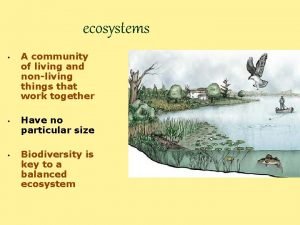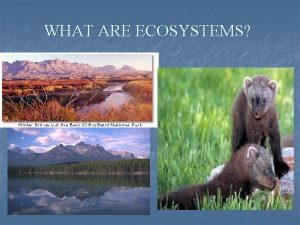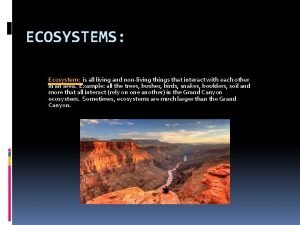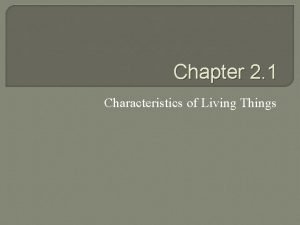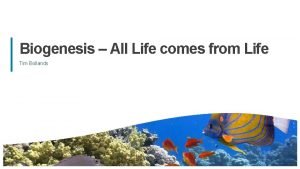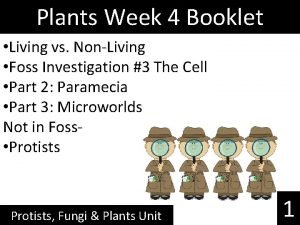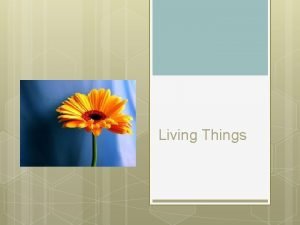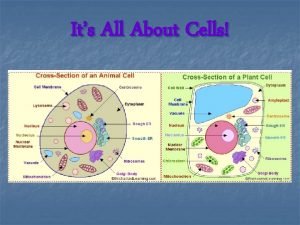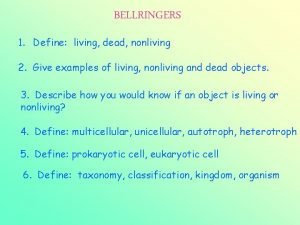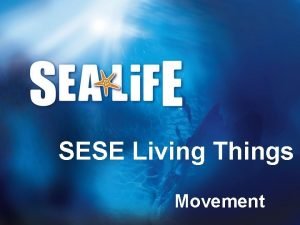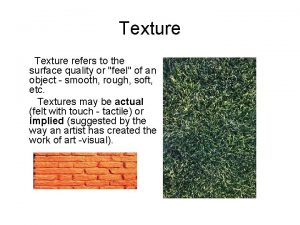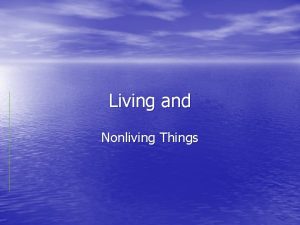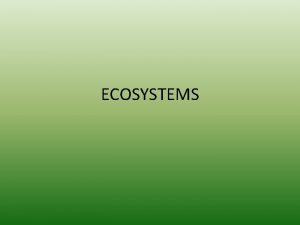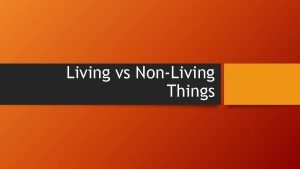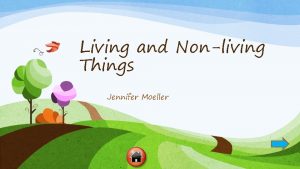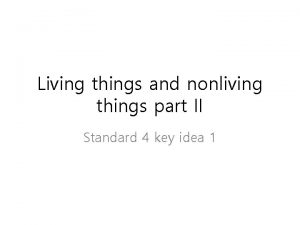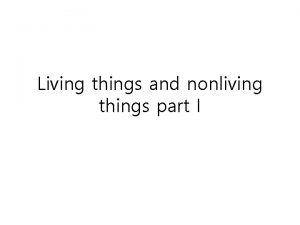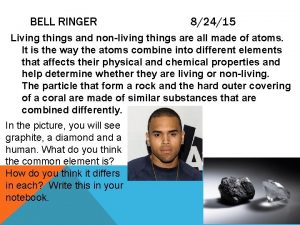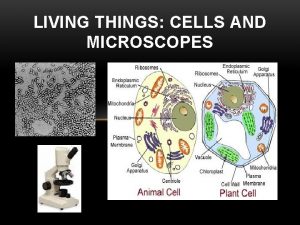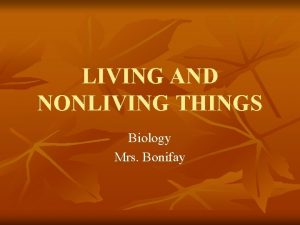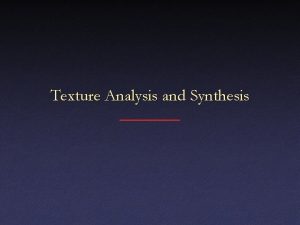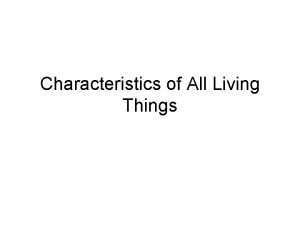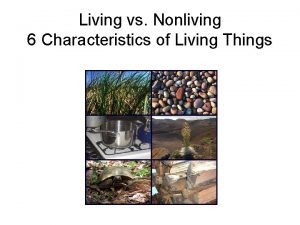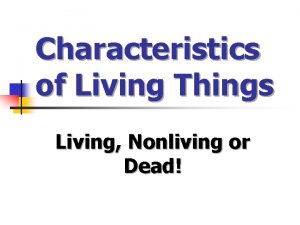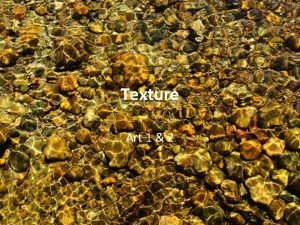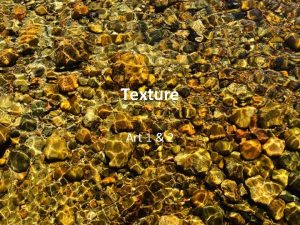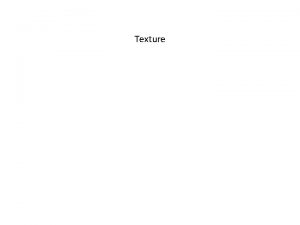Exploring Living and Nonliving Things Exploring Texture in


















- Slides: 18

Exploring Living and Nonliving Things

Exploring Texture in the Garden LIVING THINGS GROW, MOVE, AND REPRODUCE. NONLIVING THINGS DO NOT.

Exploring Texture in the Garden ROCKS LIVING OR NONLIVING?

Exploring Texture in the Garden ROCKS LIVING OR NONLIVING? • Rocks do not grow, move on their own, or reproduce. • Rocks are nonliving.

Exploring Texture in the Garden SOIL LIVING OR NONLIVING?

Exploring Texture in the Garden SOIL LIVING OR NONLIVING? • A large part of soil is made up of nonliving small pieces of rock— sand, silt, and clay particles. • Living things such as insects, fungi, and bacteria can be found in soil. • Almost any handful of soil will contain both living organisms and nonliving elements.

Exploring Texture in the Garden SEEDS LIVING OR NONLIVING?

Exploring Texture in the Garden SEEDS LIVING OR NONLIVING? • Seeds are living, but they do not show the characteristics of living things until they germinate. • Seeds need water and the proper temperature to germinate and grow.

Exploring Texture in the Garden PLANT PARTS LIVING OR NONLIVING?

Exploring Texture in the Garden PLANT PARTS LIVING OR NONLIVING? • Plants and plant parts continue living for some time after they have been picked. • They will eventually die because they no longer have a source of nutrients and water.

Utah AITC School Garden Center The Utah AITC School Garden Center offers practical information about gardening with children and provides engaging lesson plans and activities that integrate gardening themes into core curriculum.

Growing Plants in Science and Literature, More Than an Empty Pot • On the outside of a seed is the seed coat. Its purpose is to protect the seed. • On the inside is the embryo (what will become the new plant) and food for the embryo, the cotyledon. • When the seed receives the proper amount of warmth and moisture, it will begin to germinate. • The cotyledons provide food for the embryo until it grows new leaves. The leaves will then use the energy from the sunlight to carry out photosynthesis, making food for the plant.

Growing Plants in Science and Literature, More Than an Empty Pot WHAT DOES A SEED NEED TO GERMINATE? • Most seeds are dormant until they receive warmth and moisture. • When a seed receives the correct amount of moisture and the proper temperature, it will begin to germinate, which means it becomes active and sprouts.

Growing Plants in Science and Literature, More Than an Empty Pot FARMING IN A GLOVE • Soybeans, corn, alfalfa, wheat, and oats • 3 -5 days to germinate

Growing Plants in Science and Literature, More Than an Empty Pot WHAT DOES A PLANT NEED TO GROW? • Water • Light • Nutrients • Air • Space

Growing Plants in Science and Literature, More Than an Empty Pot

Terrariums: A Look at the Living and Nonliving World • Organisms like plants and animals depend on living and nonliving things in their environment. • The interaction of sun, soil, water, and weather impacts plant growth and survival.

Vermicomposting • Worms live in soil and help change bits of dead plants and animals into nutrients that plants can use. • Worms eat organic matter and turn them into castings—also known as worm poop—that are nutrient rich and useful to plants. • Worms also help aerate and loosen the soil so that the roots of plants can more easily develop underground.
 Whats an energy pyramid
Whats an energy pyramid Ecosystem living and nonliving things
Ecosystem living and nonliving things Ecosystem living and nonliving things
Ecosystem living and nonliving things Live n living
Live n living Things in ecosystem
Things in ecosystem Living and nonliving characteristics
Living and nonliving characteristics Smallest living unit
Smallest living unit Is a moss living or nonliving
Is a moss living or nonliving Egg living or nonliving
Egg living or nonliving Living things
Living things Is euglena living or nonliving
Is euglena living or nonliving Is a candle living or nonliving
Is a candle living or nonliving Are eukaryotic cells living or nonliving
Are eukaryotic cells living or nonliving Is sulfolobus living or nonliving
Is sulfolobus living or nonliving Is a starfish living or nonliving
Is a starfish living or nonliving Trees living or nonliving
Trees living or nonliving Chapter 20 viruses and prokaryotes
Chapter 20 viruses and prokaryotes Name 7 life processes of living things
Name 7 life processes of living things Implied texture
Implied texture


